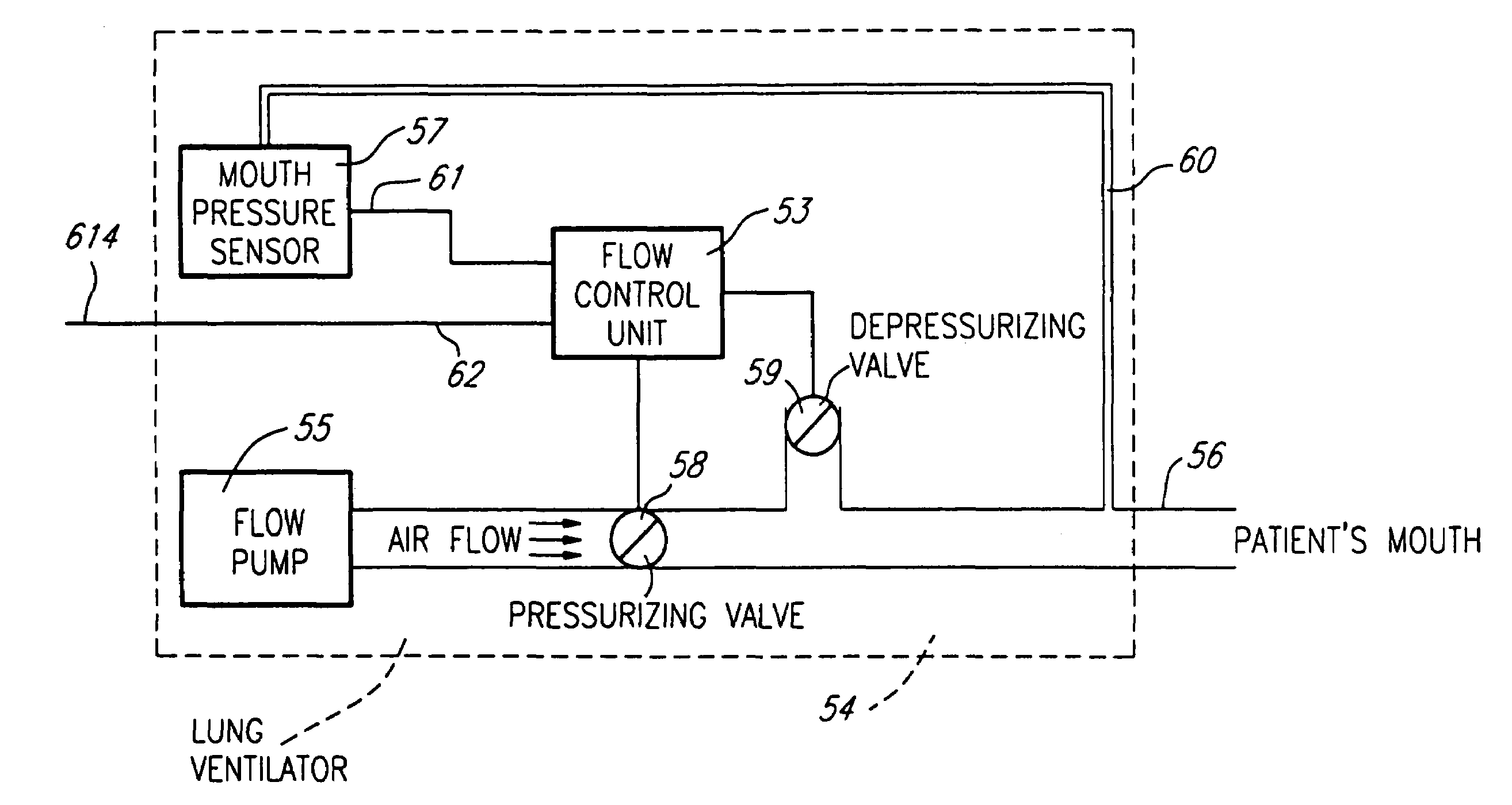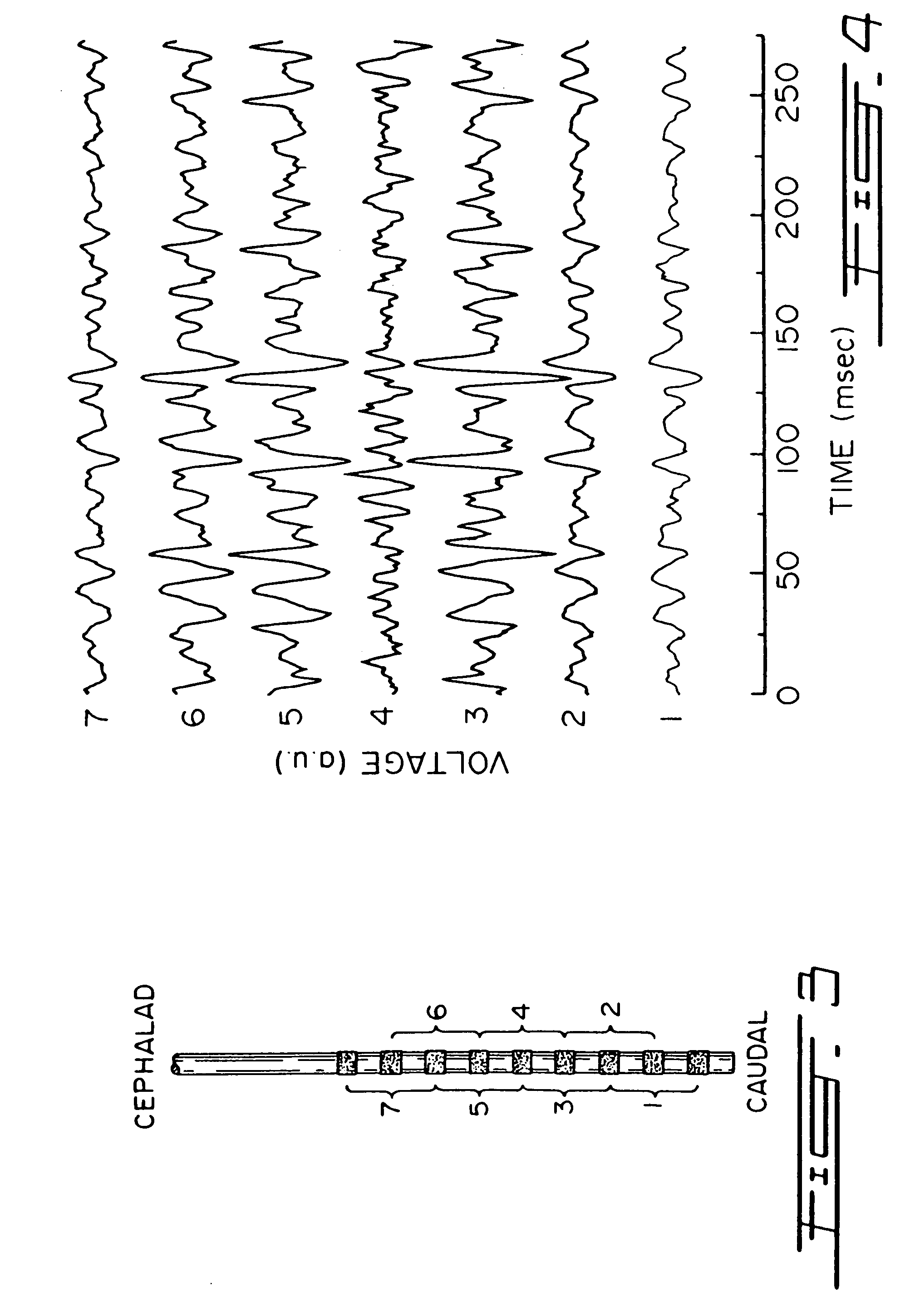Target drive ventilation gain controller and method
a technology of gain controller and target drive, which is applied in the direction of valves, respirators, mechanical equipment, etc., can solve the problems of insufficient bio-physiological application of these theories, insufficient standardized analysis procedures for recording signals, and low amplitude of emg signals, etc., and achieves the effect of extreme pressure support levels
- Summary
- Abstract
- Description
- Claims
- Application Information
AI Technical Summary
Benefits of technology
Problems solved by technology
Method used
Image
Examples
Embodiment Construction
[0044]To measure EMG activity of the diaphragm 11 (EMGdi) of a human patient 14, an array of electrodes such as 12 (FIGS. 1 and 2) are mounted on the free end section 15 of an oesophageal catheter 13, with a constant inter-electrode distance d (FIG. 2). As shown in FIG. 1, the catheter 13 is introduced into the patient's oesophagus through one nostril or the mouth until the array of electrodes 12 are situated at the level of the gastro esophageal junction. The diaphragm 11 and / or the oesophagus slightly move during breathing of the patient 14 whereby the array of electrodes 12 also slightly moves about the diaphragm 11. As will be explained in the following description, automatic compensation for this displacement is provided.
[0045]To mount an electrode 12 on the free end section 15 of the catheter 13, stainless steel wire (not shown) may be wound around the catheter 13. The wound stainless steel wire presents a rough surface smoothed out by solder, which in turn is electroplated wi...
PUM
 Login to View More
Login to View More Abstract
Description
Claims
Application Information
 Login to View More
Login to View More - R&D
- Intellectual Property
- Life Sciences
- Materials
- Tech Scout
- Unparalleled Data Quality
- Higher Quality Content
- 60% Fewer Hallucinations
Browse by: Latest US Patents, China's latest patents, Technical Efficacy Thesaurus, Application Domain, Technology Topic, Popular Technical Reports.
© 2025 PatSnap. All rights reserved.Legal|Privacy policy|Modern Slavery Act Transparency Statement|Sitemap|About US| Contact US: help@patsnap.com



